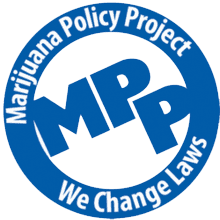Condition Report: Parkinson’s Disease
October 15, 2019In 2017, the National Academies of Science, Engineering & Medicine released a comprehensive report, “The Health Effects of Cannabis & Cannabinoids”, based on the research that had been done to date. Following that valuable report, we’ve been providing weekly Condition Reports on 2018 research for each of the conditions cited in that report, such as chronic pain, cancer, anorexia, and more – these reports seek to provide evidence for both medical benefits and risks for each condition.
Because prohibitive cannabis regulations have, for years, limited the amount of available information, we believe it is important to educate the public about up-to-date research. Although medical cannabis usage is still both controversial and inconclusive, the World Health Organization has urged for nations to remove cannabis from Schedule IV from their list of drug scheduling, which would allow the protection for researchers to conduct more comprehensive studies.
Canneconomy.com and its affiliates aim to provide general information about cannabis consumption in the hopes for policymakers, users, researchers, and the general public to make informed decisions about cannabis and its derived products. In order to do this properly, we must seek and report the best available research for a better understanding of cannabis as it takes on the medical field.
For an overview on how cannabis can be used to treat other medical conditions, please visit the following Condition Reports:
- Chronic pain
- Cancer
- Anorexia & Weight Control
- IBS
- Epilepsy
- MS & Spinal Cord Injury
- Tourette Syndrome
- Amyotrophic Lateral Sclerosis (ALS)
- Huntington’s Disease
Parkinson’s Disease Highlights:
-Because of the potentially negative side effects of various Parkinson’s Disease treatments, there has been an increased demand for medical cannabis to be used to combat these side effects.
-Both CBD and THC were found to be effective in treating patients’ nausea, insomnia, pain, muscle spasms, and more.
THERAPEUTIC FINDINGS: PARKINSON’S DISEASE
Parkinson’s disease is another neurodegenerative disease that shares a similar ability to cause continuous, debilitant, and incurable processes as Huntington’s Disease. Cannabis extracts and synthetic cannabinoids have been accessible on prescription since March 2017 to patients with neurodegenerative diseases (Mainka, Stork, Hidding, and Buhmann, 2018). Given the extensive media coverage of this subject, increasing numbers of patients with Parkinson’s disease are requesting for a cannabis prescription, which is a challenge for their neurologists and other health care providers.
Garcia et al. (2018) have shown that in an in-vitro cellular neuroinflammation model, VCE-003.2 is neuroprotective against inflammation-driven neuronal damage. VCE-003.2 is a quinone derivative of non-psychotropic phytocannabinoids cannabigerol (CBG), which may derive its activity from the peroxisome proliferator-activated receptor-π (PPARπ). Garcia et al. analyzed the anti-inflammatory and neuroprotective properties of VCE-003.2 and concluded VCE-003.2 administration to LPS-lesioned mice attenuated the loss of tyrosine hydroxylase (TH)-containing nigrostriatal neurons and the intense microgliosis caused by LPS in the substantial ganglia. Analysis of proinflammatory mediators such as tumor necrosis factor-α (TNF-α), interleukin-1β (IL-1β), and inducible nitric oxide synthase (iNOS) in the striatum by qPCR showed that they were significantly elevated by the LPS lesion and sharply reduced by VCE-003.2 treatment (Garcia et al., 2018).
On the other hand, patients of PD are typically on a wide range of pharmaceutical treatments, each with varying degrees of efficacy. Levodopa, a drug that helps replace lost dopamine in the brain, is the most widely prescribed medication of Parkinson’s Disease (Parkinson’s Foundation, 2019). Although Levodopa significantly improves PD symptoms, its long-term use can lead to an aggravation of motor skills (Prandi, Blangetti, Namdar and Kolati, 2018). Other treatments resulted in side effects such as nausea, loss of memory, insomnia, and even hallucinations. Therefore, there’s has been an increased demand for medical cannabis to PD’s healthcare providers to help ease the side effects of pharmaceutical treatments and even treat the disease’s symptoms, since it there is evidence cannabis helps patients control their symptoms and maintain a higher quality of life (Prandi et al., 2018). Both treatments based on CBD and THC are effective in treating patients ‘ nausea, insomnia, anxiety & depression, pain, muscle spasms, and neuroprotective properties (Prand et al., 2018).







